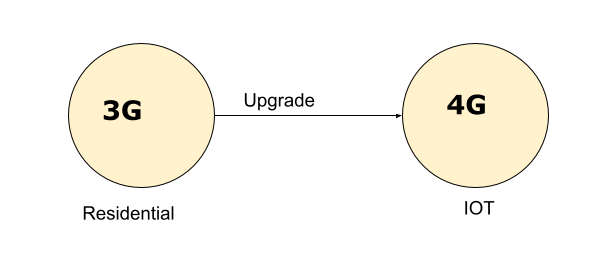Difference between 3G and 4G TechnologyIntroduction to 3G and 4G Technology3G refers to the third generation of cellular network, which is developed for enhancing the information quality and broadband connectivity with higher properties.4G LTE refers to the fourth generation of network technology which has a lot of capabilities in terms of connection establishment and mobile network services. Basically, there are various parameters over which we can make a difference between the 3G technology and the 4G technology. These are the following parameters:

3G Technology3G stands for the third generation of cellular networks, which is used in mobile technology. Before this generation, there existed two previous generations, so this third generation consists of the features of the previous two generations with some additional features. The 3GPP (Third generation partnership project) was started in 1998 to set up the 3G network. There are various benefits provided by the 3GPP program, which are the following:
GPRS, which is the part of 3G technology, was developed in 2000, and EDGE was developed in 2003. These are sometimes called 2.5G instead of 3G because they have a lower data rate compared to 3G technology. 4G TechnologyAs we know, 4G means the fourth generation of network technology; 4G supports a huge number of users at a time than the 3G technology. It provides speed like broadband through a mobile device using high-speed upload and download packets. Basically, there are two types of 4G technology that provides different speed: 4G LTELTE means Long Term Evolution. 4G LTE gives the downloading speed around 150 Mbps which is used to download 1000 MB files in just 8 minutes. 4G LTE-AdvancedIt offers a downloading speed of around 300 Mbps which can be used to download a 1000 MB file in just 4 minutes. The main usage of 4G is in the business, where productivity suffers due to poor speed connection. In rural areas where a broadband connection is not available, 4G provides high speed connectivity. The main reason for high speed connectivity in 4G is LTE. With LTE, devices are able to send the data and transmit data at the same time because they utilize different frequency bands for these tasks.LTE works on OFDM (Orthogonal Frequency Division Multiplexing) which basically divides a signal into some data streams which are parallel. These data streams travel into different radio sub channels. In the end, these data streams are combined together by the processor. Difference between 3G and 4G Technology
Next TopicDifference between
|
 For Videos Join Our Youtube Channel: Join Now
For Videos Join Our Youtube Channel: Join Now
Feedback
- Send your Feedback to [email protected]
Help Others, Please Share










